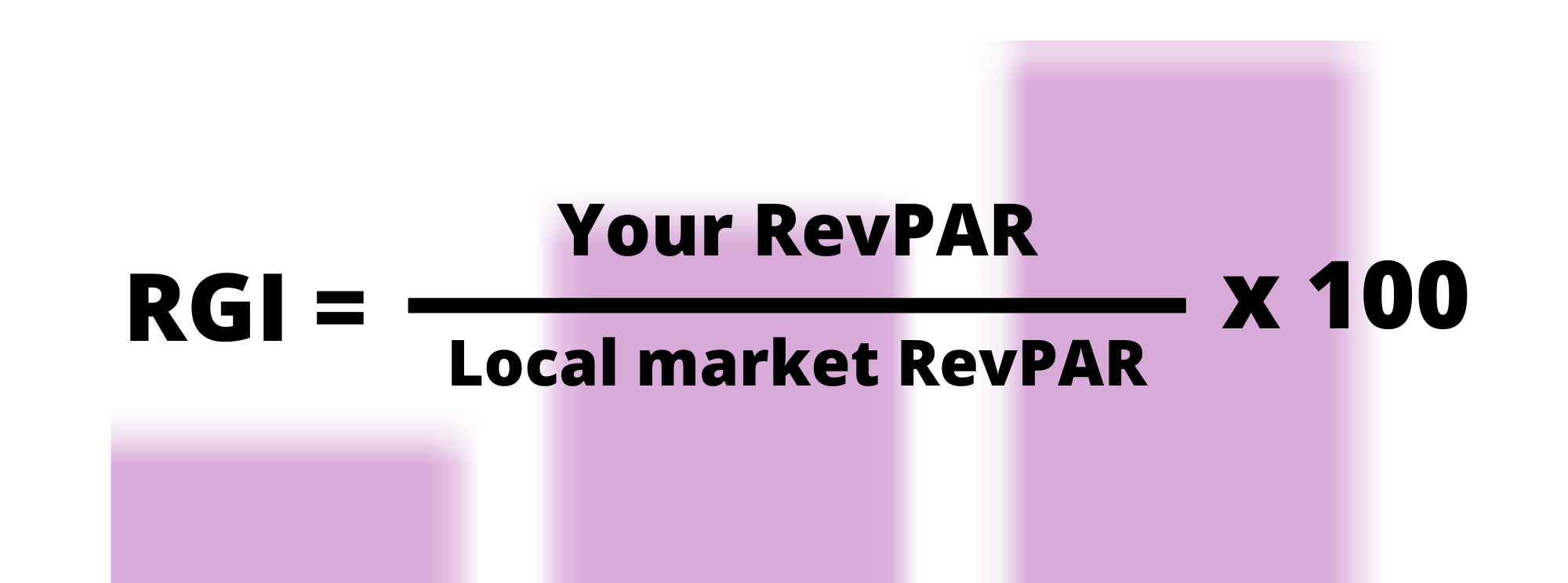Revenue Generation Index: What is RGI and why is it important to hotels?
RGI stands for Revenue Generation Index. It is also known as RevPAR index and is one of the many Key Performance Indicators (KPI) hotel professionals use to track performance.
RGI compares your hotel’s RevPAR to the average RevPAR in the market. It tells you if a hotel is gaining a fair share of revenue compared to its main competitors.
An RGI greater than 100 represents more than the expected share of the aggregated group’s RevPAR performance. Conversely, a RGI below 100 reflects less than the expected share of the aggregated group’s RevPAR performance.
How do you calculate your hotel RGI?
Here’s what you need to do to calculate your hotel’s RGI.
- Decide on a period you are going to be looking at. This can be a week, a month or an entire year of trading.
- Calculate your own hotel’s RevPAR.
- Calculate the local market’s RevPAR. You can use the help of a rate shopper for this purpose. You can find out what a rate shopper is in this blog post.
- Divide your own hotel’s RevPAR with the local market RevPAR figure.
- Multiply this number by 100.

Here’s how this looks: RGI = (Your Hotel RevPAR / Local market RevPAR) * 100
How do you calculate your RevPAR?
There are two different ways you can compute RevPAR for your hotel:
- Formula:
RevPAR = Average Daily Rate * Occupancy Rate - Formula:
RevPAR = Total Room Revenue / Available Rooms
Uses and limitations of RGI
Any RGI number greater than 100 is considered a good performance metric for a hotel. Being > 100 means that your hotel’s performance is beating the performance of your local market. You should feel proud!
Conversely, having an RGI < 100 means your hotel is under performing, in which case we recommend reading on boosting your occupancy and ways you can optimize your pricing strategy.
For accurate RGI assessment it is important to identify a compatible competitor set. You should take into account the geographic location, hotel size, star rating, targeted market, room amenities, etc. Only compare your hotel’s RGI with your closest competitors to get a fair representation.
MPI and ARI
Beyond the hotel RGI, there’s also the Market Penetration Index (MPI) and Average Rate Index (ARI).
Whilst the hotel RGI tells us the financial performance of the hotel business vis-a-vis the competition, the MPI and the ARI can shed a light on the reasons behind it.
The MPI looks at the occupancy levels, whereas the ARI looks at the average daily rates.
Calculating the MPI and the ARI is not that different from the RGI:
MPI = (Your occupancy / Local market occupancy) * 100ARI = (Your average daily rate / Local market daily rate) * 100
But more about MPI and ARI in another blog post. Stay tuned!